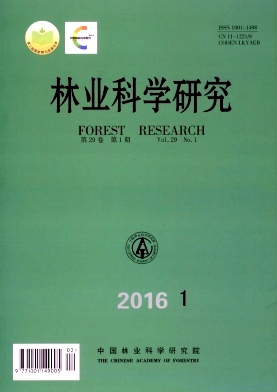|
[1]
|
中国科学院中国植物志编辑委员会.中国植物志[M].北京:科学出版社,1984.
|
|
[2]
|
何承忠,张志毅,陈宝昆,等.滇杨遗传改良策略初论[J].西部林业科学,2004,33(1):44-48.
|
|
[3]
|
康向阳,王 君.杨树多倍体诱导技术研究[M].北京:科学出版社,2010.
|
|
[4]
|
罗向东,戴亮芳,钱春桃,等.黄瓜属不同倍性异源多倍体的形态及生理特性分析[J].西北植物学报,2008, 28(3):542-546.
|
|
[5]
|
Dhooghe E, Van L K, Eeckhaut T,et al. Mitotic chromosome doubling of plant tissues in vitro[J].Plant Cell, Tissue and Organ Culture,2011,104(3):359-373. |
|
[6]
|
李 云.杨树三倍体选育研究进展[J].植物学通报,2001,18(4):451-458.
|
|
[7]
|
刘晓静,华小平,陆 波,等.彩色马蹄莲品种'Parfait'多倍体诱导及其生物学特征变化[J].植物资源与环境学报,2014,23(3):81-85,101.
|
|
[8]
|
Tang Z Q, Chen D L, Song Z J,et al. In vitro induction and identification of tetraploid plants of Paulownia tomentosa[J]. Plant Cell, Tissue and Organ Culture,2010,102(2):213-220. |
|
[9]
|
Saikat G, Nirmal M, Somnath B, et al. Induction and identification of tetraploids using in vitro colchicine treatment of Gerbera jamesonii Bolus cv. Sciella[J].Plant Cell, Tissue and OrganCulture,2011,106(3):485-493. |
|
[10]
|
白凤莹,曾青青,康 宁,等.毛白杨基因库优树倍性检测及性状对比分析[J].北京林业大学学报,2015,37(4):113-119.
|
|
[11]
|
王 君.青杨派树种多倍体诱导技术研究[D].北京:北京林业大学,2009.
|
|
[12]
|
石 乐,张平冬,毛彦科,等.高温处理诱导染色体加倍获得白杨杂种多倍体[J].核农学报,2012,26(8):1118-1123.
|
|
[13]
|
陈 杰,周 军,孙正海,等.组织培养结合秋水仙素诱导滇杨多倍体的研究[J].云南农业大学学报:自然科学版,2013,28(2):251-256.
|
|
[14]
|
辛培尧,陈 杰,唐军荣,等.滇杨多倍体的诱导研究[J].中南林业科技大学学报:自然科学版,2014, 34(3): 24-28,57.
|
|
[15]
|
李 贇.果树多倍体倍性鉴定方法的研究[D].泰安:山东农业大学,1997.
|
|
[16]
|
王侠剑.桑树多倍体植株育成初报[J].蚕业科学,1981,7(2):83-86.
|
|
[17]
|
房桂干,邓拥军,李 萍.三倍体毛白杨制浆性能的评价[J].林业科技管理,2001(增刊): 87-90.
|
|
[18]
|
李凤兰,张志毅,张民侠.白杨染色体加倍技术研究及三倍体育种(Ⅲ)-加倍体某些形态特征的观察[J].北京林业大学学报,1994,16(2): 15-18.
|
|
[19]
|
胡晓丽.三倍体毛白杨纸浆材新品种产业化应用关键技术研究[D].北京:北京林业大学,2006.
|
|
[20]
|
魏 跃,王开冻,颜志明,等.矮牵牛的多倍体诱导试验[J].浙江农业科学,2007(2):164-166.
|
|
[21]
|
Beck S L, Dunlop R W, Fossey A. Stomatal length and frequency as a measure of ploidy level in black wattle, Acacia mearnsii (de Wild)[J]. Bot J Linn Soc, 2003,141(2):177-181. |
|
[22]
|
Aryavand A, Ehdaie B, Tran B, et al. Stomatal frequency and size differentiate ploidy levels in Aegilops neglecta[J]. Genet Resour Crop Evol,2003,50(2):175-182. |
|
[23]
|
Shiga I, Uno Y, Kanechi M, et al. Identification of polyploidy of in vitro anther-derived shoots of Asparagus officinalis L. by flow cytometric analysis and measurement of stomatal length[J]. Journal of the Japanese Society for Horticultural Science, 2009,78(1):103-108. |
|
[24]
|
戴洪义.葡萄的染色体倍性与气孔性状的关系及其判别分析[J].葡萄栽培与酿酒,1990(2): 5-9.
|
|
[25]
|
高彩云,潘惠新,贾 恒,等.美洲黑杨×小叶杨杂种多倍体诱导研究[J].西北植物学报,2010, 30(1):50-55.
|
|
[26]
|
漆慧娟. 甜叶菊多倍体诱导及其生物学特性的研究[D]. 临安:浙江农林大学, 2014.
|
|
[27]
|
郭巧萍. 桃叶型半夏多倍体诱导研究[D]. 杭州:浙江理工大学, 2009.
|
|
[28]
|
刘庆忠,刘 朋,赵红军,等.同源四倍体皇家嘎啦苹果的生物学及光合生理特性研究[J].中国农业科学,2002,35(12):1573-1578.
|
|
[29]
|
施先锋.西瓜多倍体诱导及倍性鉴定的研究[D].武汉:华中农业大学,2007.
|





 DownLoad:
DownLoad: